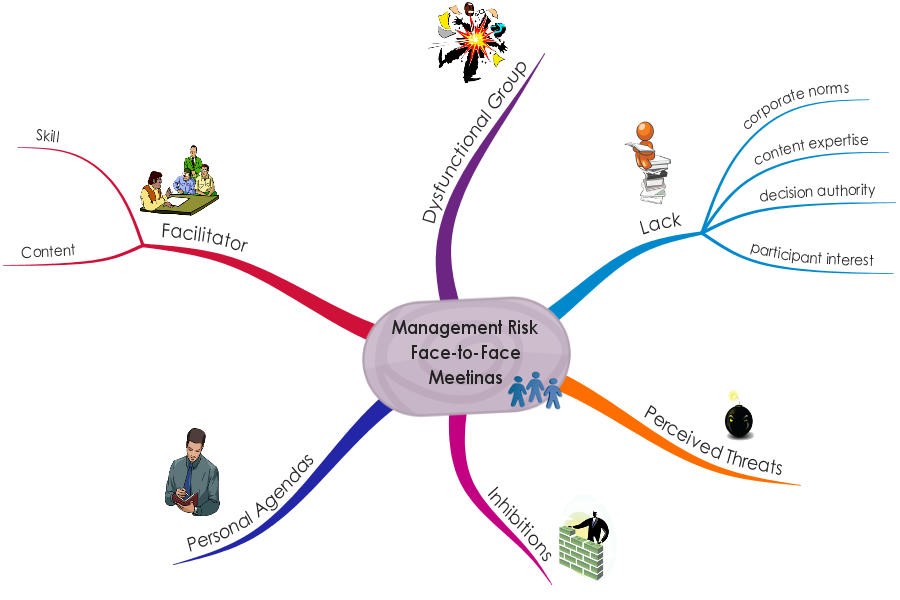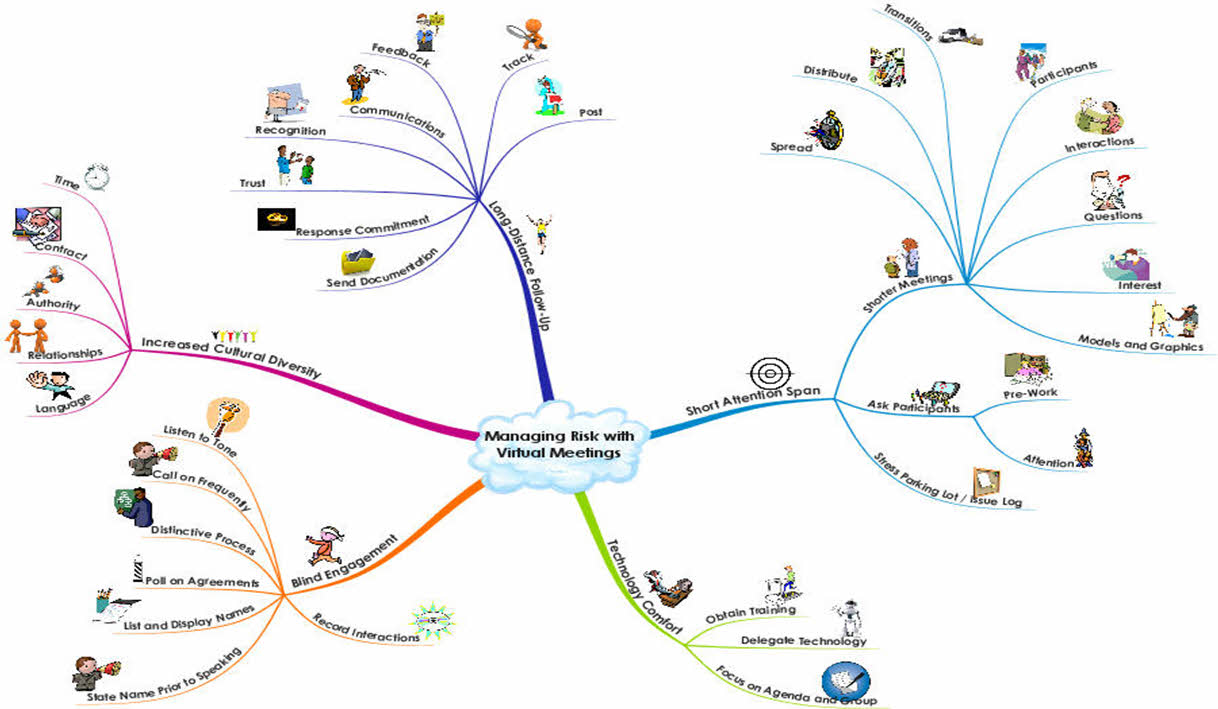 Business people call remote meetings virtual or on-line sessions, or simply conference calls. For many years we have been utilizing this form of communications to save time and money. Due to the global virus pandemic, remote meetings are now not just convenient, but a necessity for maintaining social distancing. Fortunately we have technology that assists us in managing these remote sessions to not only hear the stakeholders, but see them as well. However, remote stakeholder interviewing and meetings have their additional challenges beyond face-to-face encounters. Regardless of the technology used, we need to be keenly aware of these additional negative risks and pursue mitigations.
Business people call remote meetings virtual or on-line sessions, or simply conference calls. For many years we have been utilizing this form of communications to save time and money. Due to the global virus pandemic, remote meetings are now not just convenient, but a necessity for maintaining social distancing. Fortunately we have technology that assists us in managing these remote sessions to not only hear the stakeholders, but see them as well. However, remote stakeholder interviewing and meetings have their additional challenges beyond face-to-face encounters. Regardless of the technology used, we need to be keenly aware of these additional negative risks and pursue mitigations.
Figure 1. Mindmap of Risk for Face-to-Face Meetings

This article provides guidelines on mitigating those additional risks that incur when holding a remote interview or meeting. We need to be aware of these additional risks so that we can have an effective environment for our communications and not just rely on technology to compensate.
Stakeholders
Remote meetings involve at least two environments: yours and theirs. First consider the stakeholders viewpoint. As business analysis facilitators, we need to understand their remote environment during the call, office, home, etc. Is the remote environment comfortable for them, do they have the right equipment? Does it allow the stakeholders to focus on the subject at hand or is it distractive? For example stakeholders multitasking in the form of reading/responding to email, children or pets wanting their attention. Or maybe the stakeholders are trying to understand your graphic process models on a small phone screen. Perhaps another time and place would allow a more conducive meeting (you think!). Remember it not only takes two to tango, but also needs adequate space on the dance floor.
To properly prepare for the remote meeting, have a pre-meeting call to discuss the agenda and mitigations to address the meeting risk due to the remote environment.
|
Summary of Remote Meeting Risks
- Short attention spans
- Technology comfort
- Blind engagement
- Increased cultural diversity
- Long-distance follow-up
Mitigation Strategies to follow.
|
Figure 2. Mindmap of Additional Risk for Remote Meetings and mitigation strategies
(click image for larger version)


Mitigations for Short Attention Spans
- Keep the meeting short – 1 hour or less
- Shorten the agenda by spreading the topics over a series of meetings
- Concentrate on the meeting content in exchange for shorter meetings
- Stress parking lot (list off-agenda topics) and issue log (follow-up items to pursue) use to stay on agenda
- Ask the participants to read pre-meeting documentation prior to meeting
- Have distinct transitions when switching topics
- Limit the attendees to vital participants
- Incorporate interactive exercises for initial meetings
- Use direct questions and highlight participants’ interest
- Use models and graphics to focus dialogue when available

Mitigations for Technology Comfort
- Obtain training in the use of audio, video, and web conferencing, instant messaging and e-mail
- Focus video on artifacts rather than people, but use medium for dialogues, not presentations
- Rehearse medium use prior to meeting and develop a back-up plan for technology failure or interruption
- Delegate technology responsibility; allows the host to focus on the agenda and the behavior of the group

Mitigations for Blind Engagement
- Distribute ground rules prior to the meeting
- State your name when you speak
- Make everyone aware as new people join the session
- Have each site list and display all participants names
- Listen to participant’s tone (and your own) – how you say something, as opposed to what is said
- Monitor your tone; smile, move arms or stand-up to change tone
- Call on participants frequently
- Use a distinct decision process
- Poll participants on agreements

Mitigations for Increased Cultural Diversity ¹
- Some may view deadlines as firm commitments – (i.e., USA, Japan)
- Some may view deadlines as a goal to be balanced against other concerns and interests (holidays, local customs) – (i.e., Europe, South America, Middle East)
- Some multitask while some work serially – (i.e., France vs. Germany)
- Some may believe in the letter of the law – (i.e., USA)
- Others may believe in the spirit of the contract (local laws) – (i.e., China)
- Authority – decision making
- Some may prefer a centralized power structure – (i.e., USA)
- Others may prefer decisions made by a small group – (i.e., Japan)
- Still others may prefer to involve all affected stakeholders in approving decisions – (i.e., Sweden)
- Some may complete tasks because of commitments
- Some may complete tasks because of trust and the human relationship (use photographs and biographies ) – see Long-distance follow-up comment concerning trust
- Some may speak rapidly or pause/slow down speech or wait before speaking
- Some may use clichés – avoid catch or colloquial phrases, acronyms
- Accents - use written communications to compensate for oral communication barriers
- Some are explicit (low context) while some are implicit (high context) in communications – (i.e., USA, India vs. Middle East, Japan)

Mitigations for Long-Distance Follow-up
- Post on the Web: meeting schedules, participants, agendas, documentation, parking lot, issue log, risk chart (concerning meeting content), assumption chart
- Track results using Management By Objective (MBO)
- Provide and ask for feedback:
- Concerning participants interaction
- On meeting pace, content, process, time and focus
- Continue and encourage communications via e-mail or instant messages
- Explain issue positions and priorities
- Trust is built through reliability – assign tasks to establish a track record of deliverables
- Set expectations for follow-up commitment
- Send document with meeting results and ask for a consensus on agreements

Summary
This article reviewed the additional risk of remote meetings and their mitigations. Remember these are additional risks beyond face-to-face meeting risks as shown on Figure 1. As BA facilitators we need to address both F2F and remote risks. If you would like a summary of all of the risk cited in this artcle, a quick reference card has been provided to Modern Analyst: “Face-to-Face (F2F) and Virtual Meeting Risk Planning.”

Author: Mark Monteleon
Mark Monteleone holds a B.S. in physics and an M.S. in Computing Science from Texas A&M University. He is certified as a Project Management Professional (PMP®) by the Project Management Institute (PMI®), a Certified Business Analysis Professional (CBAP®) by the International Institute of Business Analysis (IIBA®), a Certified ScrumMaster (CSM) and Certified Scrum Product Owner (CSPO) by the Scrum Alliance. He holds an Advanced Master's Certificate in Project Management and a Business Analyst Certification (CBA®) from George Washington University School of Business. Mark is also a member of the Association for the Advancement of Cost Engineering (AACE) and the International Association of Facilitators (IAF).
Mark is the President of Monteleone Consulting, LLC and author of the book, The 20 Minute Business Analyst: A Collection of Short Articles, Humorous Stories, and Quick Reference Cards for the Busy Analyst. He can be contacted via - www.baquickref.com
References:
1. Note: Culture is a moving target over time. What may be true today, may not be true tomorrow. It is recommended that you read the third reference on world culture. Be cautious of “antidotal” observations rather than studies covering volumes of data.
- Mittleman, Daniel D. “Best practices in facilitating virtual meetings: Some note from initial experience 1” Group Facilitation. FindArticles.com. 15 Jul, 2011.
- Young, Julia “Getting Great Results from Virtual Meetings” Facilitate.com BAODN 2009 Best in the West Conference, Berkeley, CA
- www.worldbusinessculture.com for insight to cultural differences
- Graphic tool used to develop seminar mindmap drawn using Buzan’s iMindMap